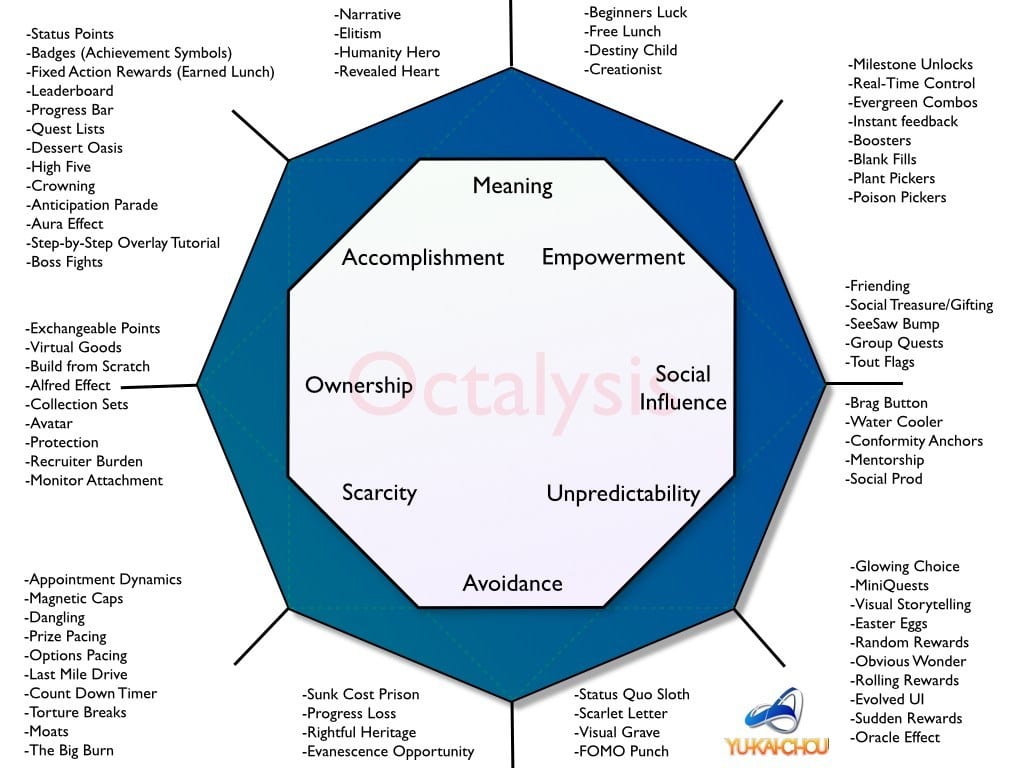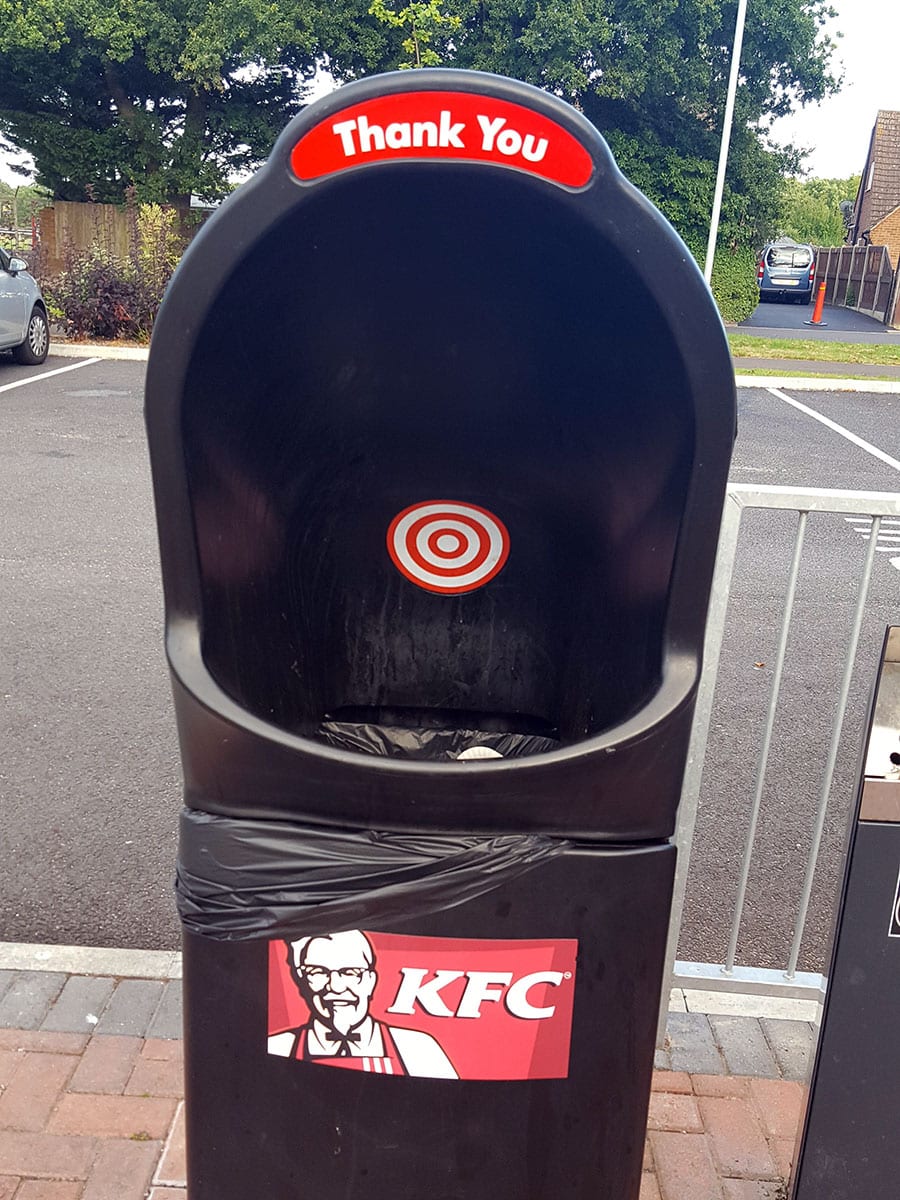Gamify your business
In the school down the road, bright little 7-year-olds get points for good behavior.
And what do points make?
Prizes!
Rewards for behavior has been ingrained in us all since we were children.
OK, if you grew up in a decade where prizes were a little more scarce, your reward for learning your 7x table might have been a sticky gold paper star on a chart, but still.
Pride and peer recognition had you grinning from ear to ear. Or maybe not, if maths wasn’t your strong point. Perhaps you secretly hated Heather for her collection of gold stars. Envy, the desire to have what others have, is as strong a behavioral motivator as any.
Humans change physically as they get older. But psychologically, maybe not so much.
We still crave fun and little rewards. And we still don’t like Heather.
Gamification
Gamification is about taking elements from games and using them in other things (that aren’t games) to make them seem more fun (and ultimately influence behavior). These ‘elements’ are often called ‘game mechanics’.
Much has been written on the subject, and if you want to deep dive into it, then Yu-kai Chou’s Octalysis model is a good place to start.
EXAMPLES TO GET YOU IN THE MOOD
Back of the net
Have you ever noticed the targets at the back of the garbage cans at your local fast food chain?
Not a bad idea. It actually does encourage people to throw their trash in the can (rather than out the window). Also helps with their aim.
If they really wanted to push the boat out, the ‘Thank you’ message should only appear when you make a slam dunk. Maybe in lights. With a little tune. And a leaderboard. OK, joking now.
Speed lottery
Have you seen this game trialled in Sweden by Volkswagen?
Drive under 30 and you’re entered into a lottery.
Potentially more effective than the usual fact-based social awareness campaigns that use a logical argument. Although perhaps the argument for the latter would be reduced speeding behavior the whole time, rather than just at the camera. Whether a reward-based lottery is more effective than a penalty-based camera, who knows. A combination of all 3 is probably best. Snakes and ladders. Carrots and sticks.
Winning
Ever won something on eBay?
You’re probably nodding and yet in reality you just bought something rather than won it. Felt like a win though, right? Because you beat others to it. None of us are on eBay’s level. Oh, except you, Mr. Bezos. But anytime we can use scarcity and/or impatience (Core Drive #6) as part of the setup then we’re on to a winner.
For your business, think limited edition.
Or
VIP membership for early-bird prices.
Or
Wait 30 days to unlock these special benefits or buy this package and get immediate access.
10 SIMPLE IDEAS YOU COULD USE
IN YOUR BUSINESS
To recap, gamification isn’t games. So strictly speaking, popping a game or quiz on your website isn’t gamification as such. Although that could certainly still be fun and help engagement.
Gamification is more about taking psychological drivers that exist in games, and implementing them in something that isn’t a game. Are you ready? Youngest player goes first.
#1 Clock’s ticking
Countdown timers are one very simple example for instance. You see, it doesn’t have to be fancy. The sense of urgency and jeopardy created by a simple sales countdown (or countdown for same day despatch) is a big motivator. We’ve written about the sense of urgency before.
#2 Swipe the carrot
What’s more, dilly dally too long and you’ll lose the associated benefits (discount / faster delivery) so this simple tactic is backed up by one of the most influential behavior drivers – loss aversion. Yep, humans will do more to avoid loss than they will to make gains of the same actual value. You can dangle a carrot but it’s much more powerful to say you’ll take their carrot away.
#3 In da club
So with loss aversion in mind, some companies have enjoyed success gifting customer privileges up-front based on the presumption of future sales. So, giving people access to special rates or a discount. But they need to order, or spend X, every month to remain in this club. As well as loss aversion, this also ties in with the natural human instinct of reciprocation. Not that you’ll give them special membership back, but you might want to reward their gesture with some loyalty of your own. This dynamic is also why free trials work so well. It’s much harder to give up all those benefits once you already have them.
#4 A little nudge. Or 3.
Probably yet to meet anyone who is a fan of these but love them or hate them, live sales notifications on websites can have a big influence on buying behavior. 10 other people are viewing this room right now… Only 2 remaining… 34 sold in the last hour…
We’re not even sure these nagging notifications are legitimate, but we’ll still checkout quickly… just in case. Social influence, scarcity and avoidance all at play here.
#5 Tell your friends
Referral marketing has been a marketing classic since time began. Genuinely, the first neanderthal tool-maker totally relied on word of mouth. And they’re just as hot today. Why? Technology has empowered social connections. No, not teens sat a cafe on their phones messaging each other, but social reach and the speed at which this can happen. Refer-a-friend schemes can incentivise people and the desired effects of social influence, ownership and possession, will help fuel the fire.
#6 Be kind and help others
Many businesses donate a proportion of their profits to charity. Some will donate a percentage of invoices that are actually paid on time. But if you can really make a difference, and wear this as a badge for all to see, then the ‘Humanity Hero’ aspect of ‘Epic Meaning’ can be a useful behavior driver. Heard of Toms before? For every purchase you make, Toms helps provide shoes, sight, water and safer birth services to people in need. A motivator in it’s own right. But obviously just like sustainable clothing brands such as Patagonia, wearing the brand shows others what kind of a person you are. One social influence trigger not to be underestimated.
#7 Make it challenging
Crazy, right? Usually, if you want people to do something, logic says make it simpler. But if you make things too easy it’s no fun. Legend has it, one of Twitter’s early success stories was actually limiting the user to 140 characters. Interesting. Especially seeing as one experiment got more of what they wanted when they changed the survey question from
Describe yourself
to
Describe yourself in exactly seven words
The latter had a 98% response rate.
#8 Collect the whole set
Listed as ‘Game Technique #16’ in the Ownership and Possession stakes, we have the hugely effective power of collectables. Did you collect stickers or cards in school? Garbage Pail Kids? Many of us could shed a tear for the once astronomical Star Wars collection we once had. So many kids’ toys encourage you to ‘collect the whole set’. A strategy not lost on McDonald’s and the toys that come with Happy Meals. Do you make different versions of your product? Could your customer base be encouraged to collect the whole set? Could you create free giveaways that could be collected instead?
#9 Loyal rewards
Nothing groundbreaking here but incredibly effective. It can be loyalty points that you can exchange, or simple loyalty cards with stamps and stickers. Starbucks use them, McDonald’s use them. Combine loyalty cards and collectables and you get McDonald’s Monopoly game where, as a reward for your purchases you get stickers with prizes. You can collect the stickers to complete a set (or street) for bigger prizes.
#10 Photo on the wall
Beefed up by the popular tv show Man vs Food, many restaurants enjoy success and publicity offering eating challenges of their own. A fun way to promote their crazy signature dishes, these social-media friendly stories have deep roots in social influence and relatedness with a dash of ownership and possession. Especially when there’s a free meal and a t-shirt involved.
But you don’t necessarily need a belly busting dish to reap the rewards of this idea. You don’t even need to be a restaurant! Digital or real-world leaderboards or ‘walls of fame’ can be set up to make heroes out of your customers or users to reward contributions of every sort.
Nettl creatives across the country love nothing more than a conflab about fun new ways to engage new business, both digitally and in the flesh. Suitable attire recommended for flesh based activities although not always necessary.








